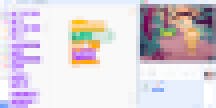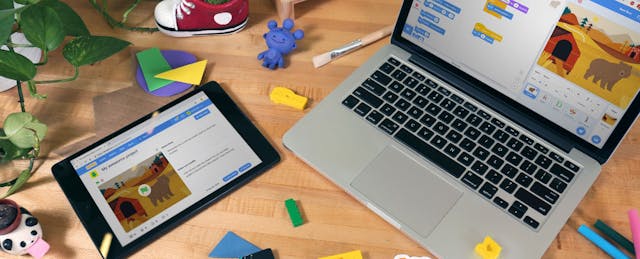On January 2, our group at the MIT Media Lab introduced a new generation of Scratch, called Scratch 3.0. Much has changed since we introduced the first generation of our Scratch programming language and online community, back in 2007.
Back then, most K-12 educators saw computer programming as a narrow technical skill, too difficult for most elementary and middle-school students, and useful only for students planning to become professional programmers. Graphical programming languages were generally seen as toys or gimmicks, not appropriate for educational applications.
Fast forward to 2019, and the perceptions and activities around computer science education have changed dramatically. There is a growing recognition of the value of introducing coding to all students. Organizations like code.org and CS4All have been successful in promoting the integration of computer science into state curriculum standards.
Scratch has grown beyond our most optimistic expectations. There are more than 30 million registered members on the Scratch website, and every month 1 million new people join (most of them ages 8-16). Every day, Scratch community members create more than 200,000 new stories, games, animations and other projects on the site. And the Scratch block-based approach to coding has become the de facto standard for introducing students to coding.
But just engaging more students in coding has never been our top priority. Rather, our educational mission is to engage students in thinking creatively, reasoning systematically and working collaboratively—essential skills for everyone in today’s society. From the beginning, we integrated Scratch coding activities into an online community, so that students can provide feedback, inspiration and encouragement to one another. And we took a project-oriented approach so that students can learn to express themselves creatively and develop their creative capacities.
Over the past decade, we’ve found that it’s much easier to spread the technology of Scratch than the educational ideas underlying it. So in developing our newest generation of Scratch, we’ve put special emphasis on supporting the interest-driven, project-based, creativity-enhancing activities that are at the heart of our educational approach.

The initial results are encouraging. As we tested prototypes of Scratch 3.0, we’ve been amazed by the diversity and creativity of projects that kids have made—such as a hedgehog that speaks French, a hippopotamus that dances to hip-hop and a soccer game you control with your shoe.
Scratch 3.0 includes “extensions”—extra collections of coding blocks—that are designed to broaden the range of what students can create with Scratch, to make sure that it connects with the wide diversity of student interests. Students can program motors, lights and sensors with the LEGO and micro:bit extensions. They can program characters to speak in other languages with the Translate extension or to talk out loud with the Text-to-Speech extension. And the library of extensions with continue to grow over time.
We’ve also added a wide range of video tutorials, to help students and teachers get started on Scratch projects, and to support Scratch’s creative learning approach. Over the coming year, we plan to provide new resources for teachers each month, highlighting strategies for supporting creative use of Scratch in classrooms.
Partner organizations are also providing new resources to expand the creative possibilities of making and learning with Scratch. The ScratchEd Team at the Harvard Graduate School of Education is launching a new version of its popular Creative Computing Curriculum Guide (updated for Scratch 3.0), and expanding its Scratch Educator Meetups. Meanwhile, CS First and Code Club are updating their offerings to support Scratch 3.0 activities.
The growing societal interest in coding provides a great opportunity—not just for supporting future engineers and scientists, but for enabling all students, from all backgrounds, to develop the confidence and capacity to express themselves creatively with new technologies.
Today’s students want to design, create, experiment and explore with new technologies. They’re willing to work hard on projects that connect with their interests and that provide opportunities for collaboration and expression. Scratch 3.0 is designed to support these students: a next generation of technology to provide the next generation of students with the tools and support they need to realize their dreams and ambitions.


